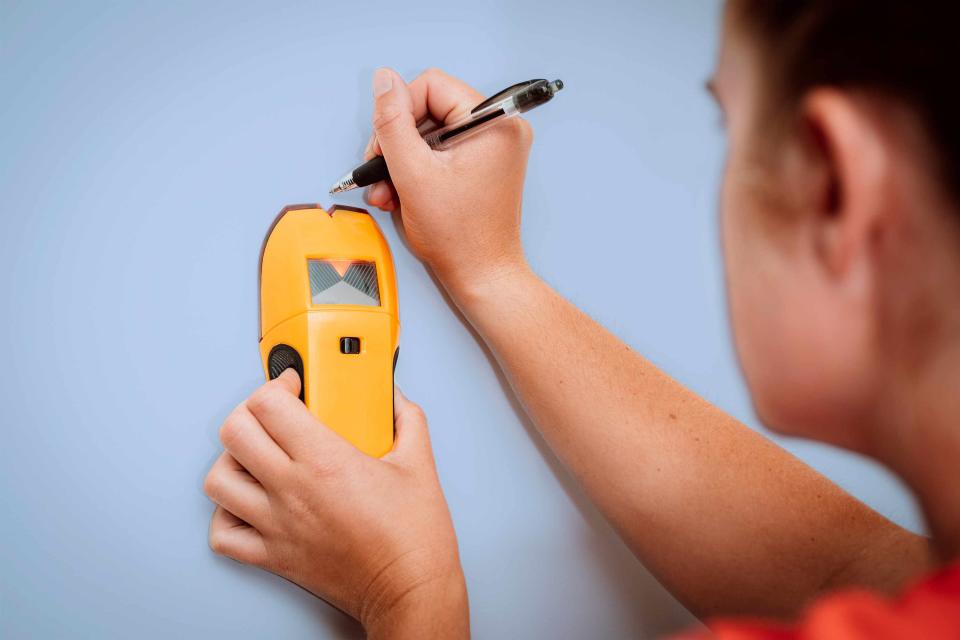2 Expert Tricks for Finding Studs in a Wall Without a Stud Finder
Surprise: One of them is not the knock test.

Alex Ratson/Getty Images
Mounting a television or hanging art is often never as simple as just haphazardly pounding a screw into any old wall—to make sure your wall piece is secure, one of the first things you need to do is make sure you find a stud (aka a vertical beam in the wall that offers support) to which you can affix your hardware.
“It’s important to locate them for hanging things because they’re the strongest points on the wall,” says Jordan Slocum and Barry Bordelon, the pair behind The Brownstone Boys. The Brooklyn-based design duo specializes in gut renovations—in fact, they’re authoring a book on the topic (For the Love of Renovating) and they’re participating in our 2024 REAL SIMPLE Home, which as it turns out, is also a total gut renovation of a historic brownstone in Brooklyn.
Needless to say, they’re probably the best experts to tap about the importance of finding wall studs. Here, they offer their expertise on how to find studs in a wall.
Related: 4 Smart Strategies for Creating a Stylish Gallery Wall
How to Find a Stud Without a Stud Finder
According to Slocum and Bordelon, you can actually roughly measure from a door frame. “Traditionally, studs are located about 16 inches away from the center of an outlet, and they’re spaced at intervals of 16 inches,” they explain. If you want to make sure you’ve really landed on a stud, you can use a strong magnet to locate the nails or screws embedded in the stud.
The pair also says you can use a magnet to locate an entirely metal stud, which are a little more common nowadays in new construction, though wood studs are still more popular.
Slocum and Bordelon caution, “If you’re not drilling or hammering into a stud, you’re puncturing drywall and going into empty space or insulation. There are often electrical lines, HVAC lines, plumbing, etc. in those spaces that can be punctured, so it’s best to avoid them as well.”
Does the Knock Test Work?
Some people believe that knocking or tapping on the wall can help you find a stud—the idea is that it sounds less hollow—and more muffled—where a stud should be. Slocum and Bordelon are wary of this technique, though, and say in a pinch this could work, but it’s not always super accurate.
How Old Your Home Is Matters
Your home’s construction date is highly relevant when it comes to locating studs—like we mentioned earlier, some newer homes have metal studs, so you’ll need to use a magnet if you don’t have a stud finder.
The other thing to note, according to The Brownstone Boys, is that more historic homes have plaster over lath, which can complicate things. “Before drywall, people would frame out a wall with their studs, then cover the gaps between the studs with skinny pieces of wood called lath. The lath would then be coated in plaster. This makes for much thicker walls, so a regular stud finder may not work.”
What Is a Good Stud Finder?
The Brownstone Boys recommend the Franklin Sensors ProSensor 710 Professional Stud Finder, which happened to be a top performer in a recent test we conducted of 30 stud finders. It has “professional” in its name, but we highly recommend it as a solid option for beginners. Slocum and Bordelon agree with our findings and say, “It’s reliable and gets the job done!”
Related: The 7 Best Stud Finders of 2024, Tested and Reviewed
For more Real Simple news, make sure to sign up for our newsletter!
Read the original article on Real Simple.


